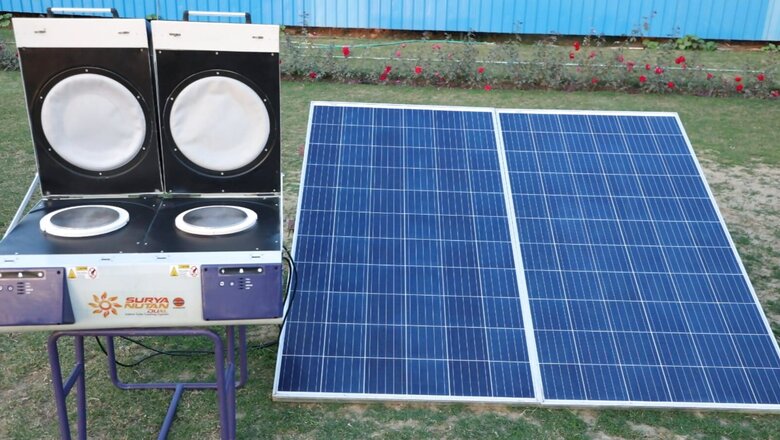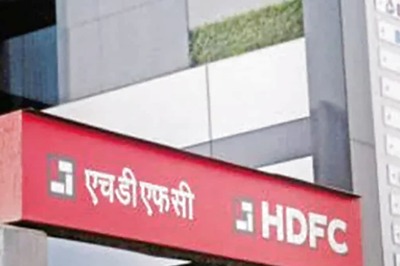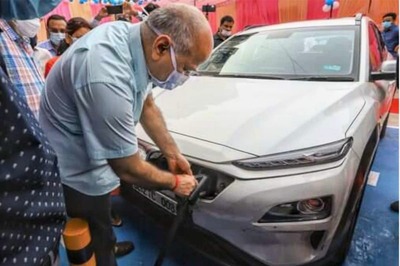'Sunrise' Sector: Modi Govt's Solar Cooktop Push Set To Fuel Sweeping Change in India's Energy Scene

views
What Ujjwala was to the first term of the Narendra Modi government, a massive solar cooking top initiative could be for the second. The Prime Minister will be doing a commercial launch of a twin solar cooktop in India on February 6.
Government sources said the double-burner solar cooking top would be unveiled as part of an initiative of Indian Oil Corporation and the patent has been shared with enlisted vendors for manufacturing, marketing and providing after-sales service to enable them to use it for scaling up production and marketing them as widely as possible. The price of the solar cooking top is expected to be around Rs 15,000 with the government planning a subsidy like for solar pumps, and option of paying the money in instalments, and ultimately bringing down the price to below Rs 10,000 by scaling of quantity. “We expect that everyone who has an LPG connection would buy a solar cooking top as well additionally,” a senior government official told News18 on Friday.
“If this green, clean, effective, and permanent solution for the cooking needs of the families reaches about 3 crore households by 2025-26, then this deployment of solar cookers is expected to lead to the following benefits over a period of 7 years — savings in LPG cost by more than Rs 1 lakh crore, Forex savings of Rs 50,000 crore, CO2 emissions reduction by 50 million tonnes, and marketable carbon credits worth about Rs 4,000 crore,” the official said.
Big change
Government sources said the country had come a long way from using firewood to kerosene to LPG cylinders, and the solar cooking top could bring in a new revolution in kitchens in the country. Sources said the World Bank and Melinda Gates had also shown interest if the technology can be scaled up for countries in the Global South.
The government has tested these solar cooking tops on about 50 trial users for the last six months in extreme cold and hot weather conditions including by the Army, BRO, and schools with all kinds of foods being prepared on it, including at Leh, Lakshadweep, Gwalior, Udaipur, and Delhi/NCR to obtain user feedback under actual use conditions.
These trial users’ included households belonging to BPL families, middle-income group families, NGOs, old-age homes, monasteries, and jails. The indoor solar cooking system has been found to cook a variety of Indian foods involving operations like boiling, frying, baking, etc.
In the solar cooking top, the main unit always stays in the kitchen and a cable carries solar energy captured through a PV panel kept outdoors or on the roof. It is rechargeable and the indoor cooking stove uses the sun’s energy to cook food while always being kept in the kitchen. The twin-cooktop premium version model can be charged with fully solar as well as in hybrid mode using grid-based electricity for both cooktops.
The stove is different from solar cookers as it does not have to be placed under sunlight. The government feels this will contribute to its green energy goals and reduce emissions. It will also not have a recurring cost like LPG cylinders and could be a game changer.
Other launches
The PM will also be launching E20 (ethanol-blended) fuel on February 6 after the phased rollout of E20 planned to commence from April 2023 has been advanced to February 6. It will be launched at 84 retail outlets of oil marketing companies in 11 states/UTs. Modi had launched a roadmap for ethanol-blending in India in June 2021 and advanced the target of 20% ethanol-blending from 2030 to 2025 and plans to produce 1,000 crore litre of ethanol-blended fuel in India by then.
Along with the launch of E20, the PM will also launch a Green Mobility Rally on February 6 to create public awareness for green fuels in the country such as E20, flex fuels, hydrogen fuel, CNG, etc. In the rally route, there will be a display of creatives showing benefits accrued in terms of foreign exchange, income to farmers, and GHG emission reductions. The Green Mobility Rally will have various types of 2W, 3W, and 4W vehicles such as E20, E85, CNG, hydrogen, etc.
Along with this, the launch of recycled fibre uniforms from plastic for CAPFs and employees of oil companies will also be done. The process of making fabric from discarded bottles involves washing, drying, and crushing of collected PET bottles into small chips. IndianOil has adopted uniforms for retail customer attendants and LPG delivery personnel made from recycled polyester (rPET), and cotton.
Each set of uniforms of IndianOil’s customer attendants shall support the recycling of around 28 used PET bottles.
Read all the Latest India News here



















Comments
0 comment